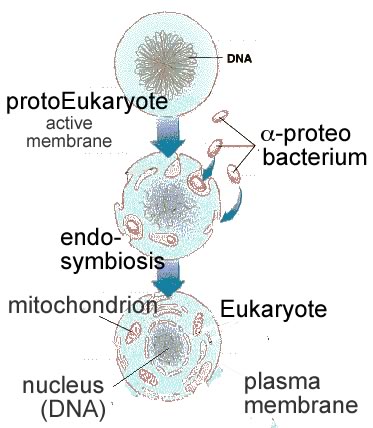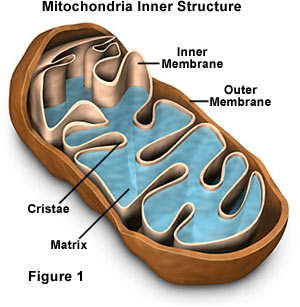Mitochondria or evolved versions of them are found in all eukaryotes.
Based on extensive molecular analyses of their genomes, it is clear that they are derived from endosymbiotic alpha-proteobacteria.
The acquisition of mitochondria by the ancestral protoeukaryote occurred over 1.5 x 109 years ago.
Since that time, mitochondria have been passed from cell to cell during the process of cell division.
Mitochondria have their own DNA and replicate by fission.
Over this period of time, many genes originally within mitochondria have moved to the nucleus of the cell.

